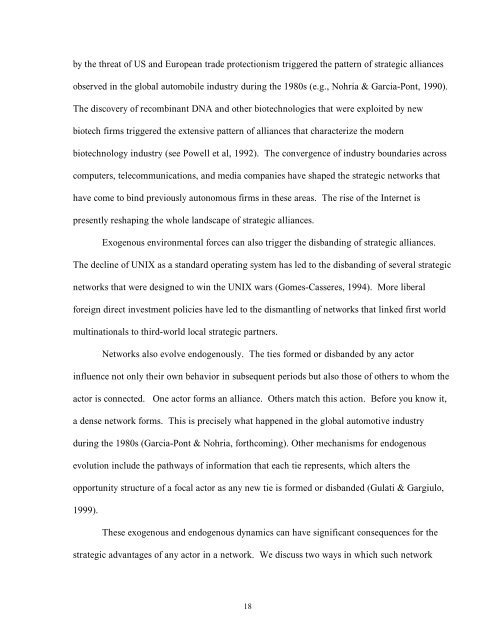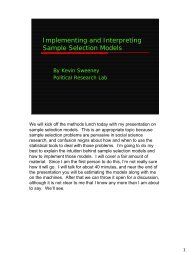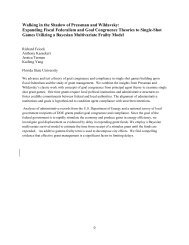STRATEGIC NETWORKS Ranjay Gulati, Nitin Nohria, Akbar Zaheer ...
STRATEGIC NETWORKS Ranjay Gulati, Nitin Nohria, Akbar Zaheer ...
STRATEGIC NETWORKS Ranjay Gulati, Nitin Nohria, Akbar Zaheer ...
Create successful ePaper yourself
Turn your PDF publications into a flip-book with our unique Google optimized e-Paper software.
y the threat of US and European trade protectionism triggered the pattern of strategic alliancesobserved in the global automobile industry during the 1980s (e.g., <strong>Nohria</strong> & Garcia-Pont, 1990).The discovery of recombinant DNA and other biotechnologies that were exploited by newbiotech firms triggered the extensive pattern of alliances that characterize the modernbiotechnology industry (see Powell et al, 1992). The convergence of industry boundaries acrosscomputers, telecommunications, and media companies have shaped the strategic networks thathave come to bind previously autonomous firms in these areas. The rise of the Internet ispresently reshaping the whole landscape of strategic alliances.Exogenous environmental forces can also trigger the disbanding of strategic alliances.The decline of UNIX as a standard operating system has led to the disbanding of several strategicnetworks that were designed to win the UNIX wars (Gomes-Casseres, 1994). More liberalforeign direct investment policies have led to the dismantling of networks that linked first worldmultinationals to third-world local strategic partners.Networks also evolve endogenously. The ties formed or disbanded by any actorinfluence not only their own behavior in subsequent periods but also those of others to whom theactor is connected. One actor forms an alliance. Others match this action. Before you know it,a dense network forms. This is precisely what happened in the global automotive industryduring the 1980s (Garcia-Pont & <strong>Nohria</strong>, forthcoming). Other mechanisms for endogenousevolution include the pathways of information that each tie represents, which alters theopportunity structure of a focal actor as any new tie is formed or disbanded (<strong>Gulati</strong> & Gargiulo,1999).These exogenous and endogenous dynamics can have significant consequences for thestrategic advantages of any actor in a network. We discuss two ways in which such network18




